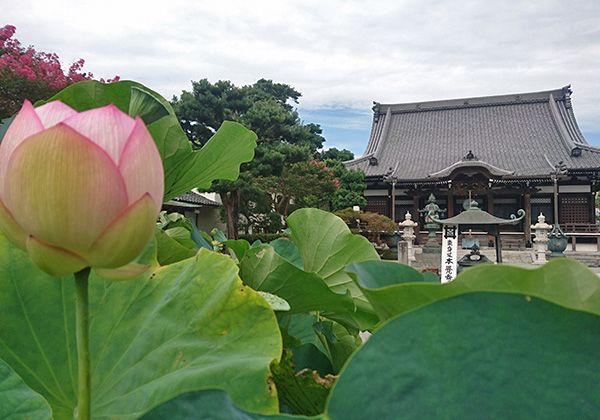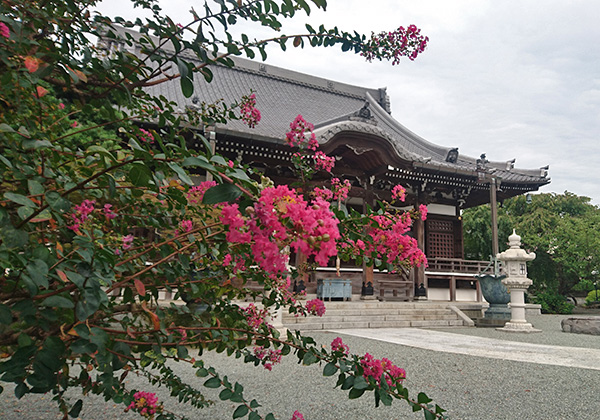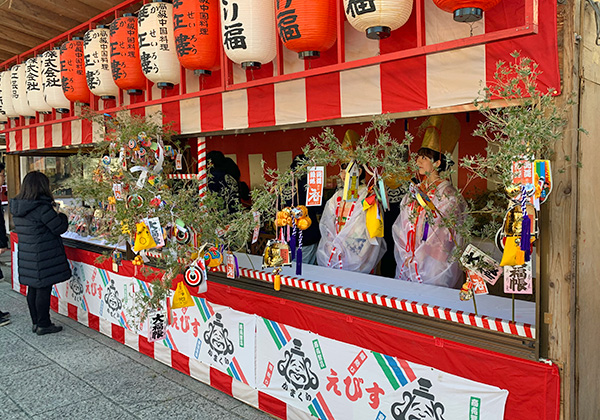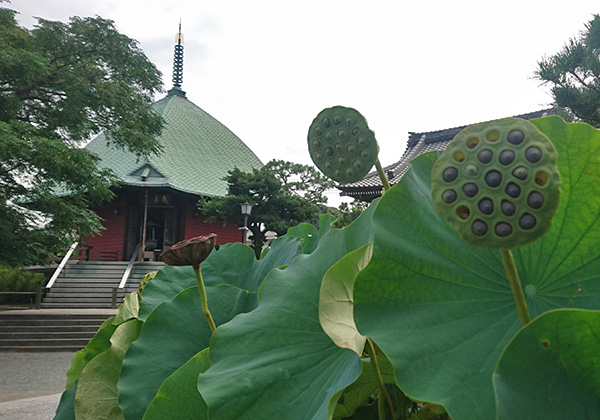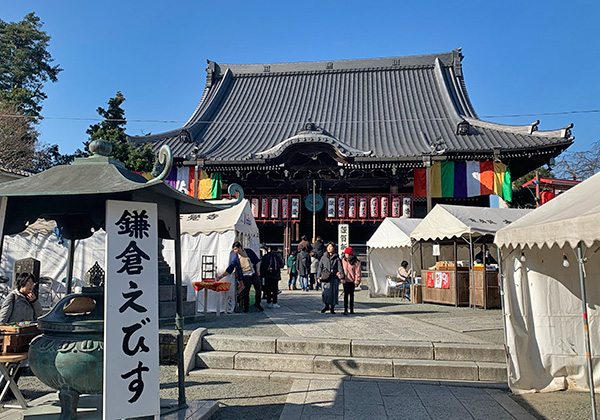Hongakuji
| Official Name | Myogonzan Hongakuji {Pronounced myo-gon-zan hon-gak-gee} |
|---|---|
| Religious sect | Nichiren sect, Buddhism |
| Founded | in 1436 by Unknown |
| Founding priest | Ichijo Nisshutsu {e-che-joe nit'-shoe-tsu} |
| Main object of worship | A set of statues and Odaimoku tablet |
| Address | 12-12, Komachi 1-chome, Kamakura, Kanagawa 248-0006 (show route from current location ) |
| Location | 300-meter southeast of Kamakura Station |
| Admission | Free (Open yard) |
| Phone number | 0467-22-0490 |
| Restrooms | Available |
Historical Overview
Naturally, the Temple is closely associated with Priest Nichiren (1222-1282), the founder of Nichiren sect Buddhism. Though he was an excellent priest, his sharp criticism against other Buddhist sects invited strong oppositions. In fact, he encountered persecutions four times during his lifetime. In the last case, he narrowly escaped death-penalty, but was deported to an island called Sado (sah-doh) off the Japan Sea coast in 1271. Three years later, he was pardoned and came back to Kamakura. With nowhere to stay, he sojourned at the Ebisudo {eh-bee-soo-doh} Hall which was situated right here at the present Hongakuji. It was an offshoot temple of Tendai sect back then.
In ancient days, this was the place where cargo boats could sailed up on the Nameri {nah-meh-re} River to load and unloaded various cargoes. The government designated this district as a commercial zone and prohibited to do business in other parts of Kamakura. Ebisu, or the Deity of Commerce, Fishing and Fortune, had been enshrined here to invite good lucks and fortunes for the locals. Priest Nichiren stayed here for about six weeks and again tried to let the government accept his long-standing Lotus-sutra doctrine but to no avail. In disappointment, he finally left Kamakura for Minobu {mi-noh-boo}, Yamanashi Prefecture, where he had a hermitage and it was later expanded into Kuonji {koo-on-gee} , the head temple of the entire Nichiren sect Buddhism. After his demise of 1282, he was buried there.
In 1436, about 160 years after Priest Nichiren came back to Kamakura from Sado, Priest Nisshutsu (1381-1459), a devout follower of the Nichiren sect, built the Temple to dedicate to the memory of the great priest, changing the denomination to the Nichiren sect. The second chief priest Niccho {nit'cho} (1421-1500), who served as the 11th chief priest of Kuonji, brought here part of Priest Nichiren's ashes from Kuonji. Since Kuonji is located roughly 130 kilometers west of Kamakura and high up on a mountain, 1,153 meters above the sea level to be exact, it was tough for the devout to visit. (Today, cable cars bring us up there in a few minutes). By sharing Priest Nichiren's ashes, Hongakuji obtained almost as identical status as Kuonji, and the Temple has since been called Higashi {he-gah-she} (east) Minobu. It was quite natural that the Temple flourished with many worshipers, most of whom were commoners living in Kamakura. As a matter of fact, the bridge in front of the gate of the today's Temple has been called Ebisudo Bridge and was the most busy district those days.
Priest Niccho often stated that eye-disease would be cured if the sick visit here and say a prayer. He himself had suffered from eye disease but could cure it through the faith in the Lotus sutra. The Temple has been respectfully called "Niccho-sama" (sama is a honorific suffix, politer than san) as many who had eye troubles experienced recovering from the illness after visiting the Temple. Even today, those who have an eye disease come here wishing the divine favor with super natural power.
The Temple consists of the Nio-mon {nee-oh-mon} (Two-Deva Gate), Main Hall, Soshido (Founding priest's hall), guest house, priests' living quarters, Ebisudo hall, bell etc.
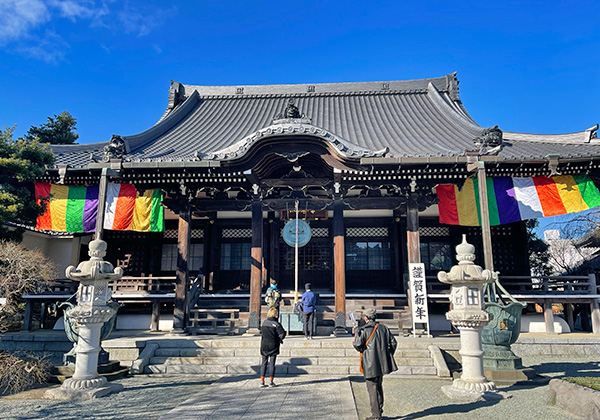
Ebisudo-hall
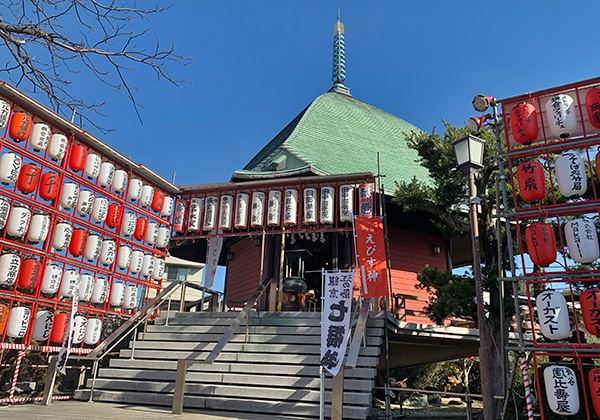
The current hall was built in 1981 in commemoration of Priest Nichiren's 700th anniversary of death. The structure is octagonal and its roofs are slightly round. Ebisu is a name of the Japanese deity of commerce and fishermen. Also called the Mercury of Japan. The statue usually holds a big sea bream under his left arm and a fishing rod in his right hand. But, in this hall, a statue which looks like Priest Nichiren is installed in the center. Annual festival is held on January 10 every year. Merchants visit here and pray for their successful business and prosperity. Beside, Ebisu here belongs to Shichifukujin {she-chee-foo-koo-gin} or the Seven Deities of Good Fortune of Kamakura.
